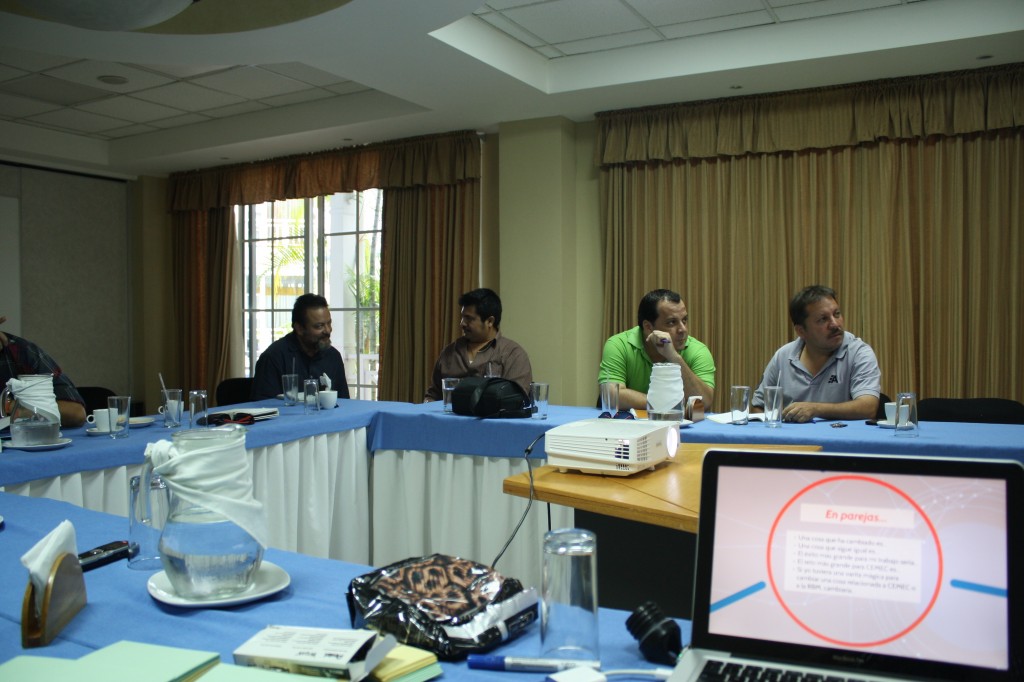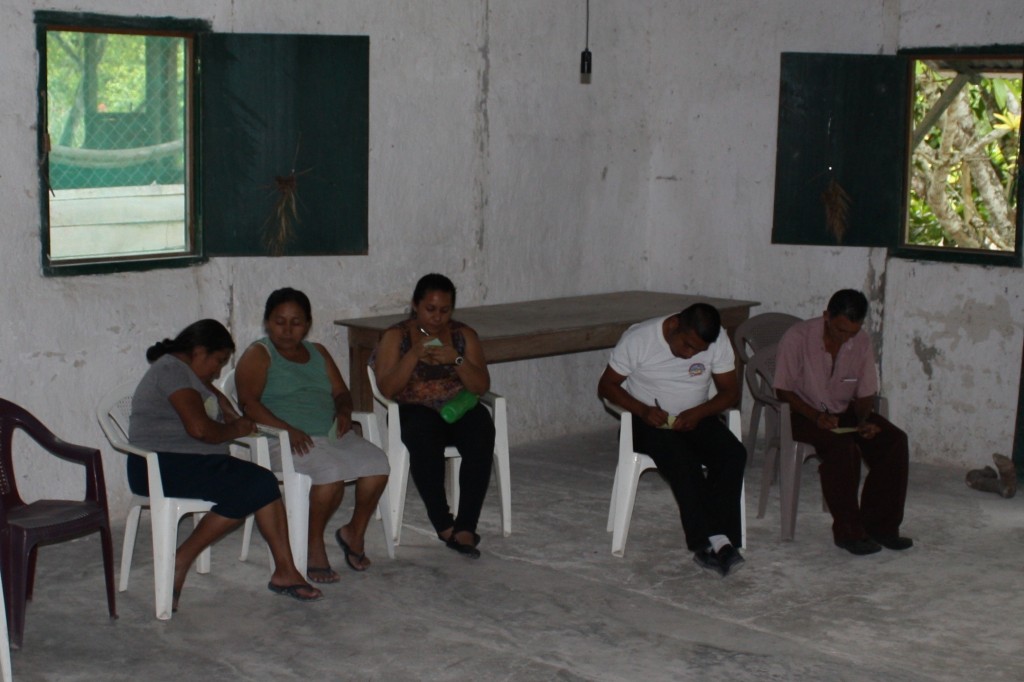Conservation, Knowledge, and Collaboration in the Maya Biosphere Reserve
Micha Rahder is Assistant Professor in the Department of Geography and Anthropology at Louisiana State University. In 2011, while a doctoral candidate at the University of California, Santa Cruz, she received a Dissertation Fieldwork Grant to aid research on ‘Satellites and Senses of Place: Local Perceptions of Remote Sensing in Guatemala’s Maya Biosphere Reserve,’ supervised by Dr. Andrew Matthews. Three years later, the Wenner-Gren Foundation awarded her the Engaged Anthropology Grant, which allowed her to return to her fieldsite in Guatemala’s Maya Biosphere Reserve (MBR) and share the fruits of her research with the community that hosted her.
In Guatemala’s Maya Biosphere Reserve (MBR), the largest protected area in Central America, the line between success and failure is never entirely clear. My research addressed the intersections of violence and inequality with technoscientific knowledge production, conservation decision-making, and environmental governance in the MBR. I wrote about how knowledge moves unevenly, with unexpected scale jumps and shifts of meaning between contexts. Sometimes it does not move at all. With support from a Wenner-Gren Engaged Anthropology Grant, I returned to Guatemala in June 2015 to report the results of my research to the remote sensing technicians, conservation NGO staff, and local community members who supported my fieldwork in 2011-12, and found my own knowledge caught in the same dynamics I had been describing. Successes and failures, shifts and gaps.
Focused primarily on technicians in a state remote sensing/GIS lab and staff of a US-based conservation NGO, my dissertation analyzed how technoscience is embroiled with deeply felt desires for clarity on a landscape characterized by uncertainty and rapid change. A portion of the fieldwork for this project, supported by the Wenner-Gren Foundation, extended my ethnographic focus from state and NGO actors to investigate the perceptions and impacts of remote monitoring and conservation in communities inside the reserve. I found that the violence and political paranoia that characterize post-civil war Guatemala are deeply entangled with the production and interpretation of scientific knowledge about its landscapes and people. Paradoxically, this official knowledge can facilitate collaboration across social and political difference, while also reinforcing those differences and their embedded power dynamics.
The tension between the necessity of working together and structural and epistemological barriers to effectively doing so is one that people living and working in the reserve struggle with on a daily basis, and I designed my Wenner-Gren Engaged Anthropology project with this tension in mind. I planned a series of small workshops with different groups – conservation NGOs, GIS technicians, and members of two local communities – to present my results and use activities to generate discussion, reflection, and feedback within familiar and trusted groups.
The first workshop, with staff from two conservation NGOs, generated the most discussion and the most tension. Familiar with anthropological critiques of conservation, some entered the room ready to defend themselves, then expressed surprise at the analytical focus on the challenges and questions they confront in their daily work. Many attendees were glad of the opportunity to step outside their often frantic daily rhythms to reflect on broader dynamics affecting their decision making, while others – particularly the Directors of the NGOs – requested more applied, concrete suggestions, even when addressing enormous structural issues. One anonymous comment read: “political interests prevent recuperating the MBR, how do we eliminate that problem?”

The remote sensing and GIS technicians, in contrast, were less interested in applied suggestions and more interested in discussing ideas about objectivity, the politics of knowledge, trust, and communication. Given that the vast majority of studies in the MBR focus on reserve residents, both NGO staff and monitoring technicians strongly noted – mostly with pleasure and curiosity – the shift in gaze that turned them from those watching and analyzing to those being studied. That this shift was greeted positively itself reflects the differences in social position, power, and access to knowledge that structures relations between conservation actors and local communities.
In contrast, in my presentation to the first village – a small community with a sustainable forest concession in the reserve – discussion focused largely on the dynamics of knowledge extraction that shape villagers’ relations to outside institutions. While community members harvest wood and non-timber forest products from their concession, institutions and independent scholars (including myself) harvest data from the village – data that travels around the world but is rarely reported back to villagers. Those in attendance were strongly aware of this dynamic, and excited that I had simply come back to report results – even before delving into the details. Those at the workshop were most interested in understanding where knowledge about their village travels and what purposes it serves, and how they might gain access to more of these data, studies, and reports. They were curious about what it is like to work in conservation institutions, and spent time discussing in depth how their village and concession fit into the larger landscape and political dynamics of the reserve, a broader perspective that they are rarely invited to engage.

Yet true to the difficulties of working in the MBR, these successful workshops were balanced with failure. The planned fourth workshop, for a Q’eqchi’ Maya migrant village located inside a National Park, fell apart due to a complex set of coincidences, miscommunications, and troubling dynamics. I ultimately learned that some organizations – especially political parties, as it is an election year – have been directly paying community members to attend meetings, making voluntary attendance at events like mine increasingly difficult to maneuver. In the end, I prepared and sent a short document instead, inviting further communication and engagement. However, that this village – the most marginalized, vulnerable, and structurally disadvantaged site from my research – was the one in which I did not hold a workshop, is troubling. While the failure was beyond my control, it ultimately replicated the same dynamics of exclusion that I critique in my research, rather than providing a space to address them as the workshop was intended to do.
The resulting gap in response, feedback, and discussion from members of this community will be further amplified as I take this work forward – at least until I wrangle another opportunity to visit. I am currently brainstorming future engagement possibilities and preparing recommendations and guidelines for distribution to a wider set of local actors, based on the discussions and commentary raised in the workshops I did conduct. It is deeply frustrating to become caught in problematic structures and dynamics even when working to undo them, a frustration familiar to anthropologists and conservationists alike. Yet, as those working and living in the MBR also recognize, it is worth the fight even when you lose. Siempre en la lucha.